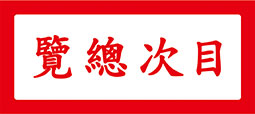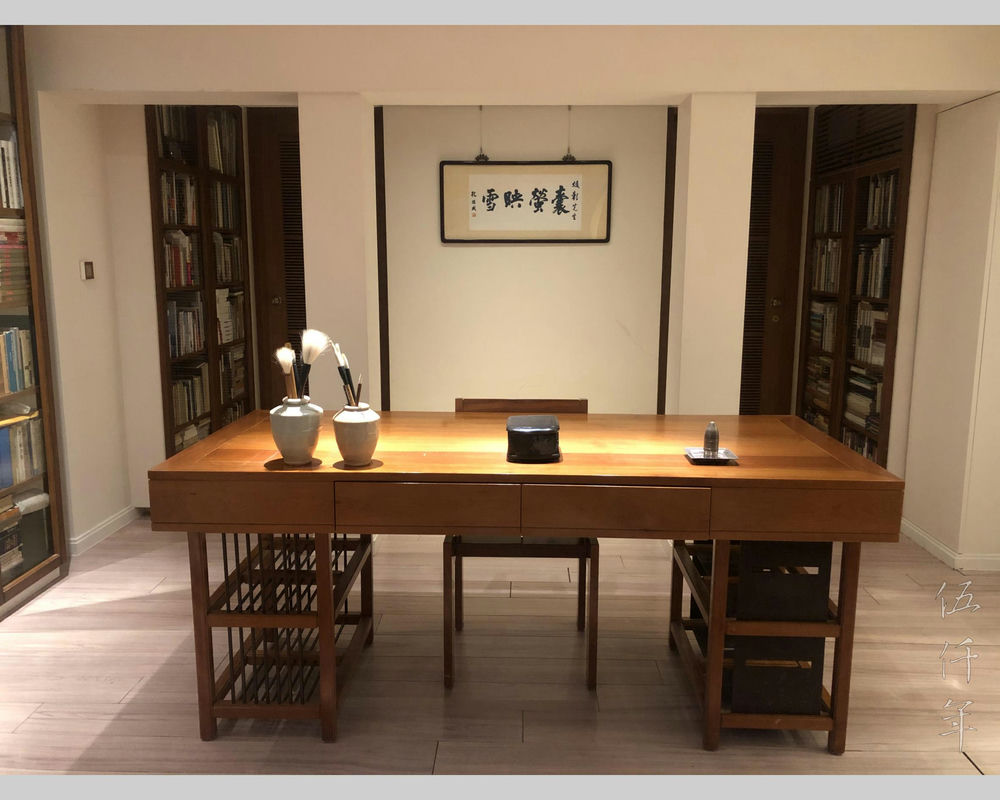
Horizontal calligraphy by K’ung Te-ch’eng in study
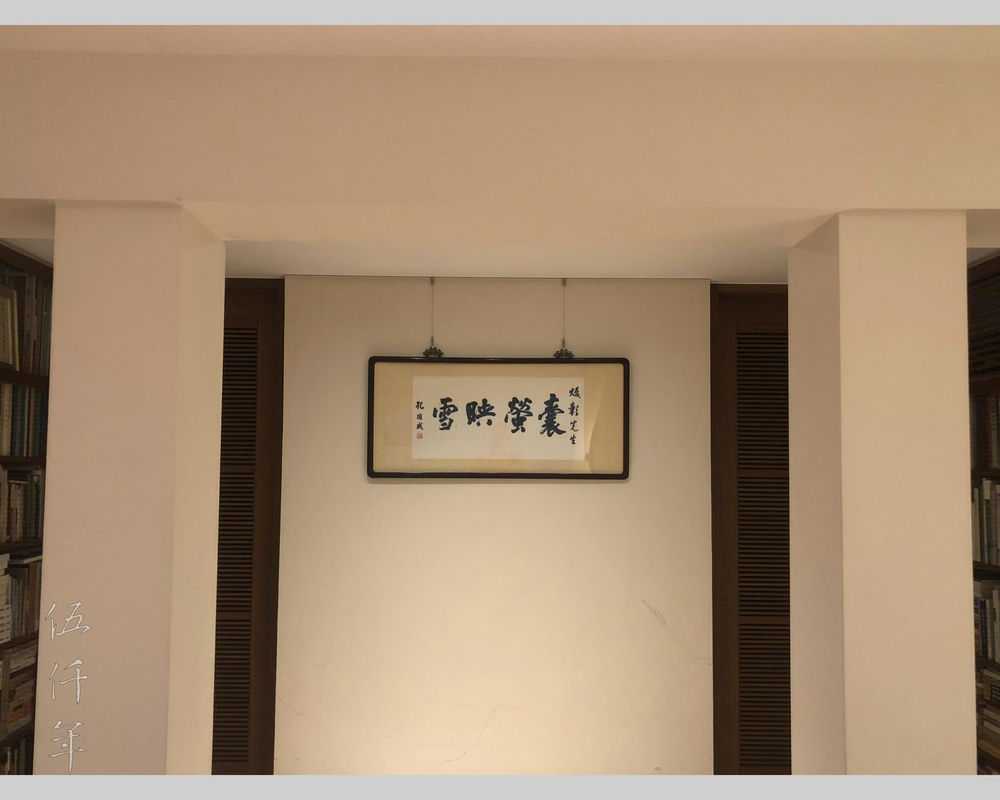
Horizontal calligraphy by K’ung Te-ch’eng on wall
Kung Te-ch’eng (1920-2008), former president of the Examination Yuan of the Republic of China, was the 77th generation descendent of Confucius from direct lineage. His tzu was Yü-ju, hao Ta-sheng, and was a native of Ch’ü-fu, Shantung province. In the 9th year of the Republic (1920), he inherited the hereditary title Duke Yen-sheng (衍聖公), which had been passed on from dynasty to dynasty since Northern Sung (960-1127). In the 24th year of the Republic (1935), he was appointed to a new title: Ceremonial Official to Celebrate the Truly Accomplished Supreme Sage and Premier Teacher (大成至聖先師奉祀官). With the outbreak of the Sino-Japanese War, he fled to Chungking after the Republican government withdrew there, fortifying the city as the provisional capital. There he was appointed council member of the National Political Council. After China’s victory over Japan in the Sino-Japanese war, he was elected representative of the Constitutional National Assembly in the 35th year of the Republic (1946). The following year, he was elected representative of the National Assembly. In the 37th year of the Republic (1948), he visited the United States on a study tour. The next year, mainland China fell to the communists, and he left the United States for Taiwan. In the 45th year of the Republic (1956), he was appointed chairman of the United Management Office of the National Central Museums, and became a professor at National Taiwan University. In the 73rd year of the Republic (1984), he was appointed president of the Examination Yuan. During his lifetime, Kung Te-cheng encountered a catastrophe unprecedented in Chinese history, when Chinese culture was crushed to the brink in mainland China, between continuation and termination, existence and extinction. He dedicated himself to be the custodian of Confucianism, resolving to rescue the country culturally and laboured towards her revival.

Portrait of K’ung Te-ch’eng, Duke Yen-sheng. Photograph courtesy Mr. Li P'ei-hui
Kung Te-cheng excelled in calligraphy, but he did not casually gift his works to friends, many of his calligraphic works were also written by ghostwriters. My modest collection has a horizontal piece of calligraphy in cursive script written by Kung Te-cheng.
The four large cursive script characters are:
Nang-ying ying-hsüeh (囊螢映雪)

Cursive script calligraphy by K’ung Te-ch’eng. The Studio of Prunus Ode Collection
On the right, there are four small cursive script characters:
Mr. Huan-chang (煥彰先生)
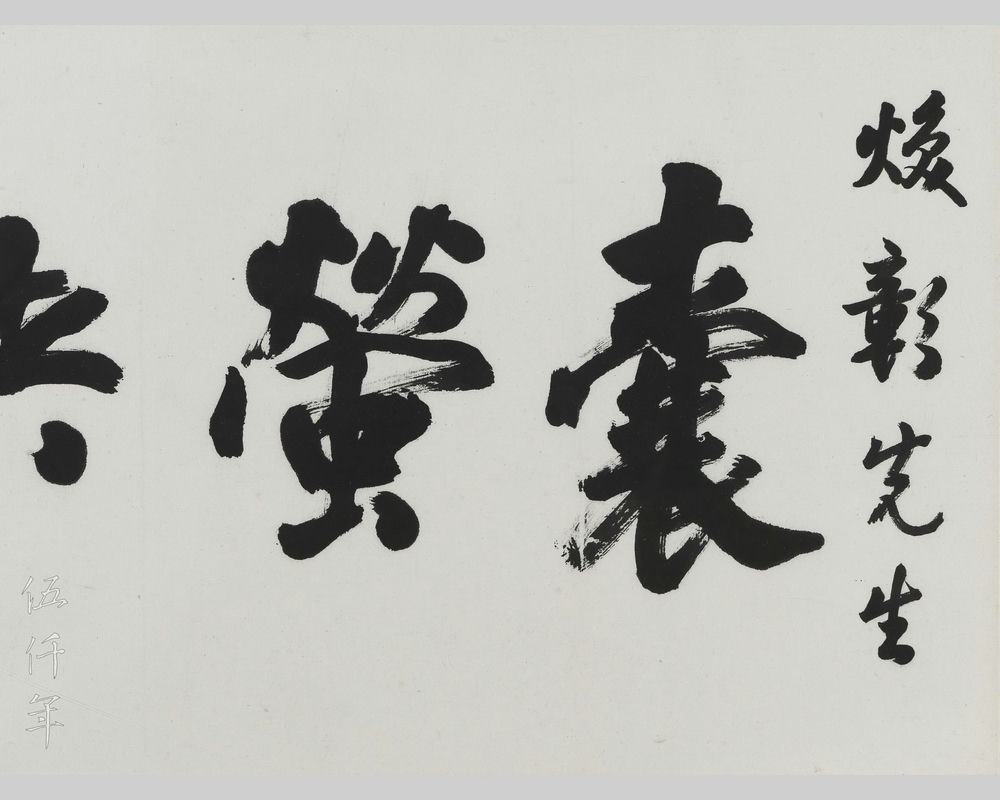
First detail of cursive script calligraphy by K’ung Te-ch’eng
On the left, there are three small cursive script characters:
Kung Te-cheng (孔德成)
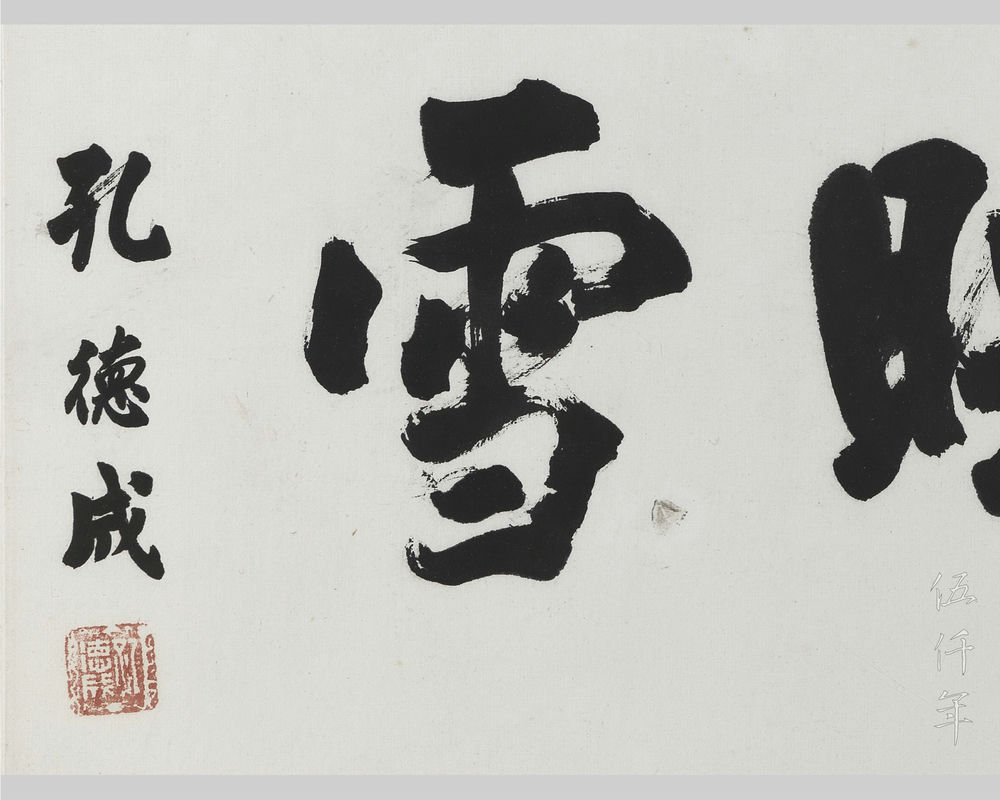
Second detail of cursive script calligraphy by K’ung Te-ch’eng
On the lower left, there is a seal impression:
Kung Te-cheng (孔德成)
“Nang-ying” and “ying-hsüeh” are allusions to two separate historical stories.
“Nang” means sac, “ying” means firefly. In the Chin dynasty (266-420), the minister of personnel Ch’e Yin (車胤 approximately 333-401), had an impoverished childhood. In summer evenings, he collected fireflies and deposited them in a translucent sac, using the glow of the insects’ body luminescence as reading light. By this method he managed to study zealously through the summer nights. The words nang-ying are customarily an allusion to this historical story.
“Ying” means reflection, “hsüeh” means snow. In the Chin dynasty (266-420), the imperial censor Sun K’ang (孫康), was also impoverished when young. In winter evenings, he used the moonlight reflection on outdoor snow as reading light. With this he managed to study unflaggingly through long winter nights. The words ying-hsüeh are customarily an allusion to this historical story.
Kung Te-cheng was ordained the dual honorary titles of Duke Yen-sheng and Ceremonial Official to Celebrate the Truly Accomplished Supreme Sage and Premier Teacher, becoming the living symbol of Confucian orthodoxy. This piece of calligraphy written by Kung Te-cheng extolling studiousness, can be an appropriate induction and encouragement to students everywhere, for the connotations they embody are prodigious.
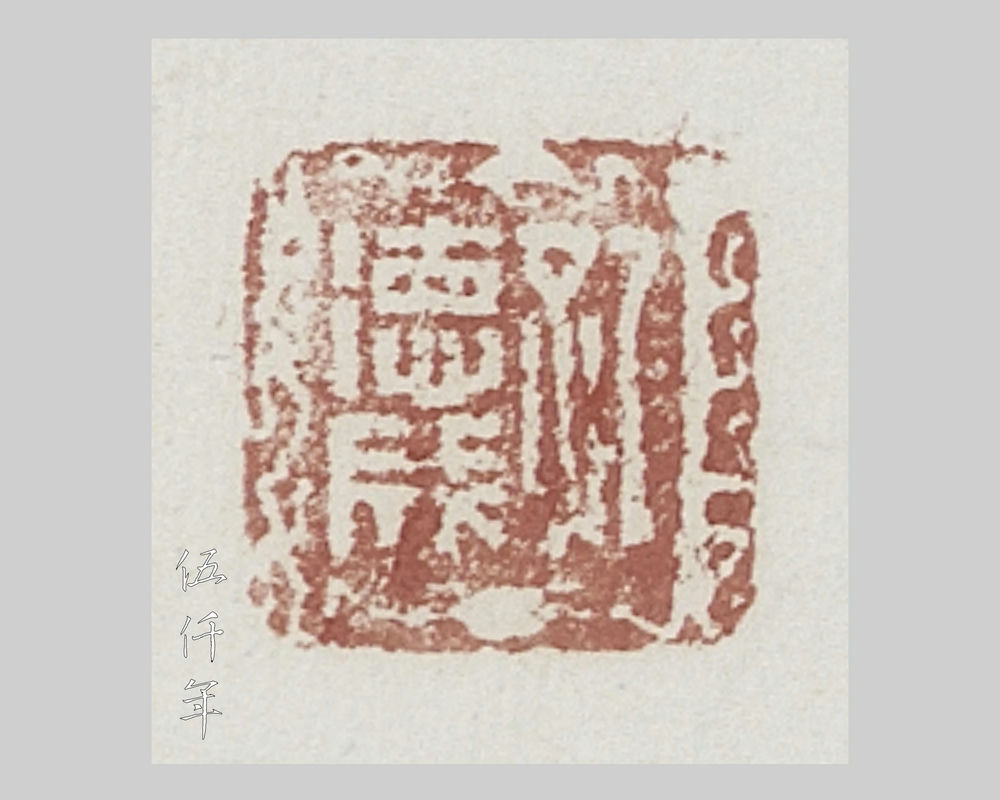
Seal impression on calligraphy: “K’ung Te-ch’eng”
